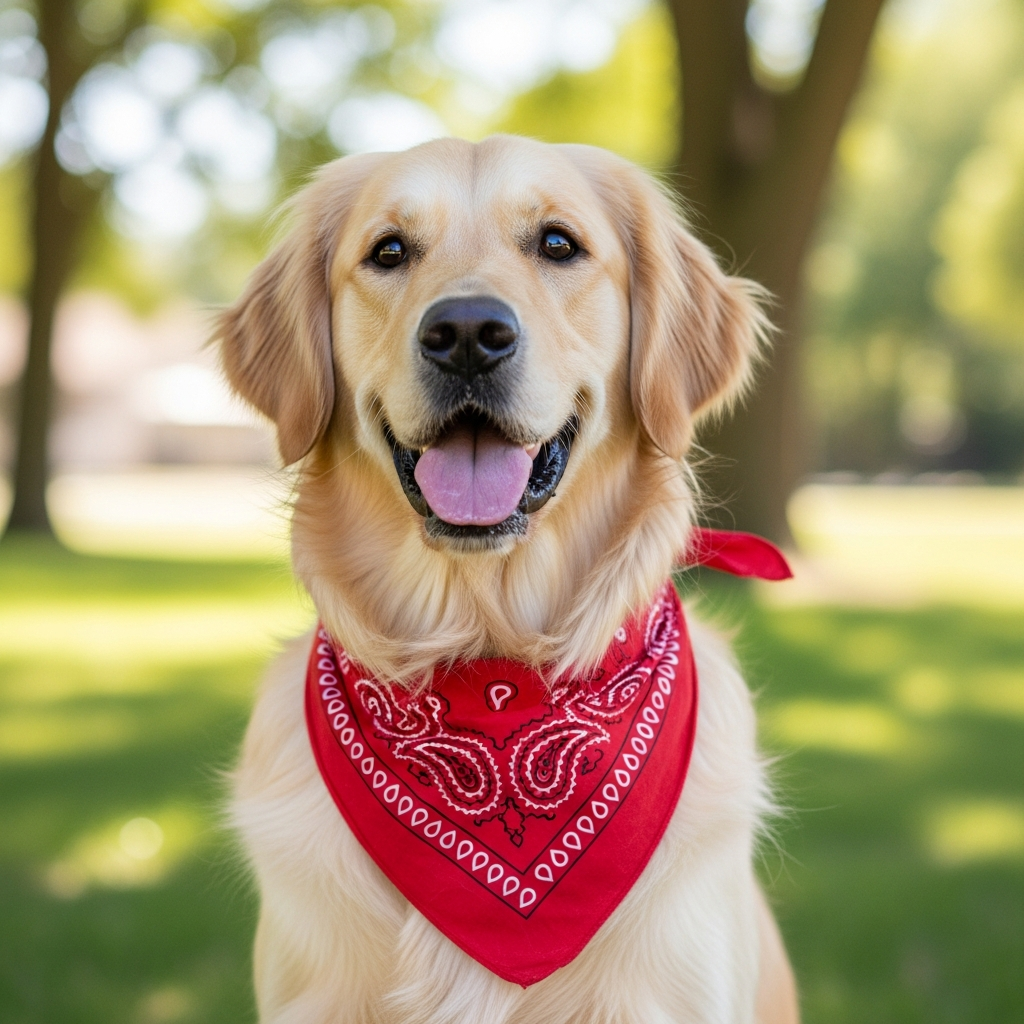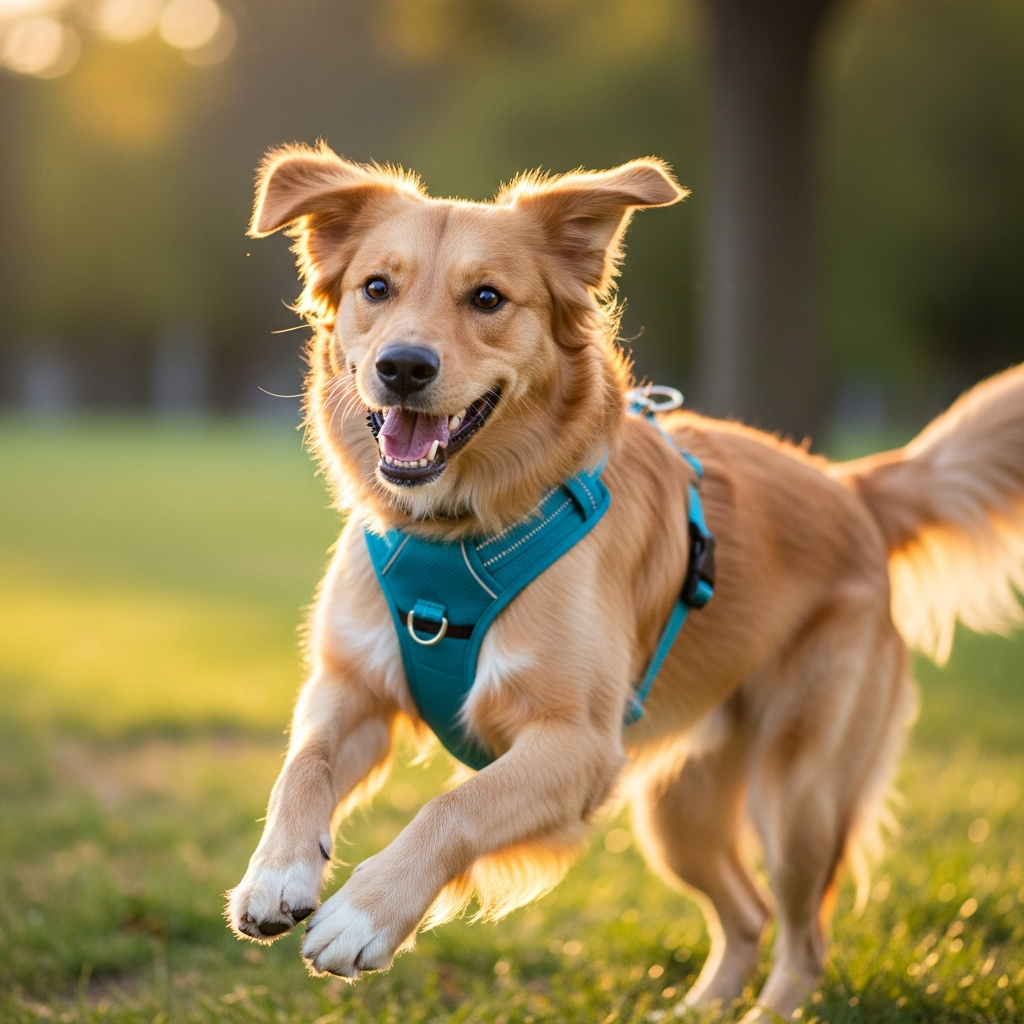Walking into a pet store, you're hit with a wall of choices. Collars, harnesses, different clips, and materials all blur together. You just want what's best, but choosing the wrong gear can make walks miserable or even cause injury.
The right choice depends on your dog's size, breed, and pulling behavior. A collar is essential for holding ID tags. A harness is the safest option for walks, especially for small dogs, flat-faced breeds, and dogs that pull on the leash.
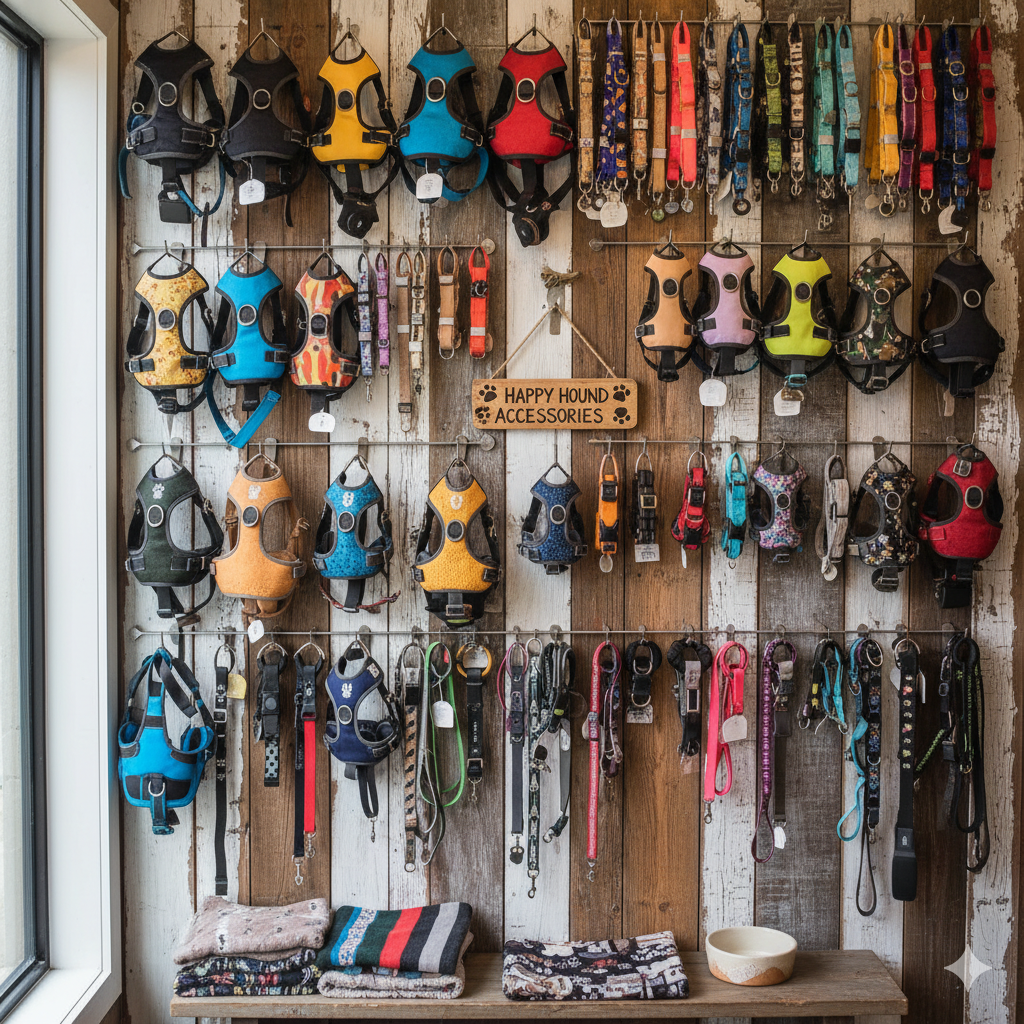
When I design dog gear, I don't see fashion accessories. I see specialized tools. Each type of collar and harness is engineered to solve a specific problem or serve a distinct purpose. Mismatched gear leads to frustration for both the dog and the handler. Understanding what each piece of equipment is built to do is the key to making the right choice, ensuring every walk is safe and enjoyable. Let's look at the most common options and find the perfect tool for your dog.
How Do I Choose Between a Flat Collar and a Martingale Collar?
You need a collar for your dog's ID tags, but their slim head lets them back right out of a normal one. The fear of them slipping loose and running off is a constant worry.
Choose a standard flat collar for most dogs to hold their ID tags. Pick a martingale collar for breeds with narrow heads, like Greyhounds or Shelties, because it tightens just enough to prevent escape without ever choking the dog.
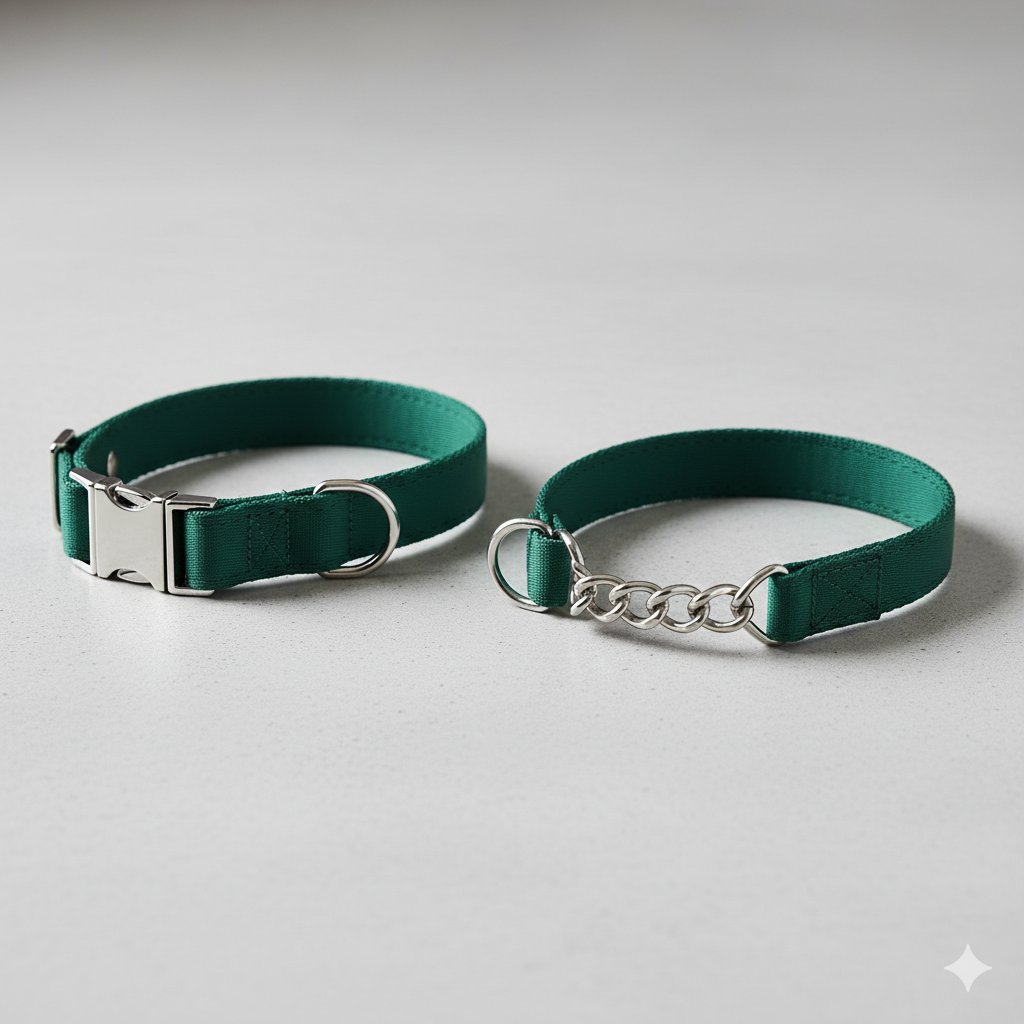
The primary job of a collar is to be your dog's wallet. It holds their identification. From a design standpoint, this means it has to be comfortable and safe for 24/7 wear. The flat collar is the industry standard. It's a simple loop, usually made of nylon or leather, with a buckle or quick-release clasp. For most dogs, this is perfectly fine. The problem comes with "sighthound" breeds or any dog whose neck is thicker than their head. They can easily back out of a flat collar. This is the exact problem the martingale collar was designed to solve. It has a second, smaller loop where the leash attaches. When the dog pulls back, this loop gently tightens the main collar, but only to a certain point. It closes just enough so it can't slip over their head. It is not a choke chain; it's a limited-slip safety device.
Collar Feature Comparison
| Feature | Flat Collar | Martingale Collar |
|---|---|---|
| Primary Use | Holding ID tags for most dog breeds | Holding ID tags for escape-prone dogs |
| Safety Mechanism | Standard buckle or quick-release clip | Limited-slip design prevents escape |
| Best For | Dogs with heads wider than their necks | Sighthounds, dogs with slim heads |
| Use for Walks | Not recommended for dogs that pull | Safer than a flat collar, but harness is still better |
When is a Back-Clip Harness the Best Choice?
Your dog is a pretty polite walker, and you just want something simple and comfortable for your daily strolls. Some of the harnesses out there look so complicated and restrictive.
A back-clip harness is the best choice for dogs that already walk nicely on a leash and do not pull. It is comfortable, very easy to put on and take off, and it keeps the leash from getting tangled in their legs.
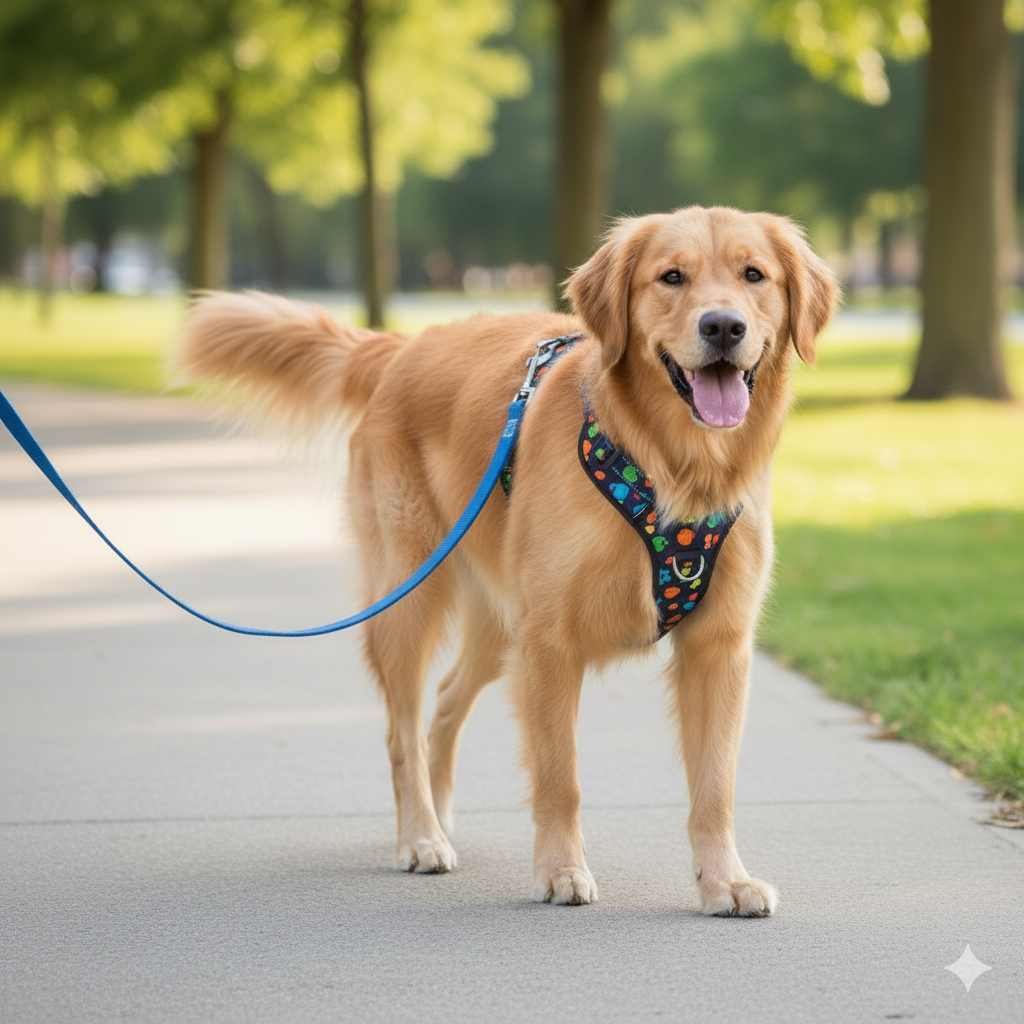
This is the standard, everyday harness. When I'm designing a back-clip harness, my primary goals are comfort and ease of use. The D-ring for the leash is on the dog's back, which feels very natural for both the handler and a dog that doesn't pull. This design completely removes pressure from the dog's neck, which is its main safety advantage over a collar. They come in many styles, from simple "H-style" straps to padded vests that offer more coverage. For dogs who are already trained to walk politely, this harness is an excellent choice. It’s perfect for casual walks, hiking, and securing them in a car. The only major drawback is that for a dog that pulls, a back-clip harness can sometimes make the problem worse. It can trigger what's called an "opposition reflex," making them pull forward even harder, much like a sled dog. So, this is a tool for management, not for training a puller.
Why Would I Choose a Front-Clip Harness for My Dog?
Walks with your dog feel like a constant battle of strength. Your arm is sore, you're frustrated, and you feel like you're being dragged everywhere you go.
Choose a front-clip harness if your dog is a strong puller. The leash attaches to a D-ring on the dog's chest. When they pull, the harness gently turns their body back towards you, making pulling an unproductive and ineffective way to move forward.
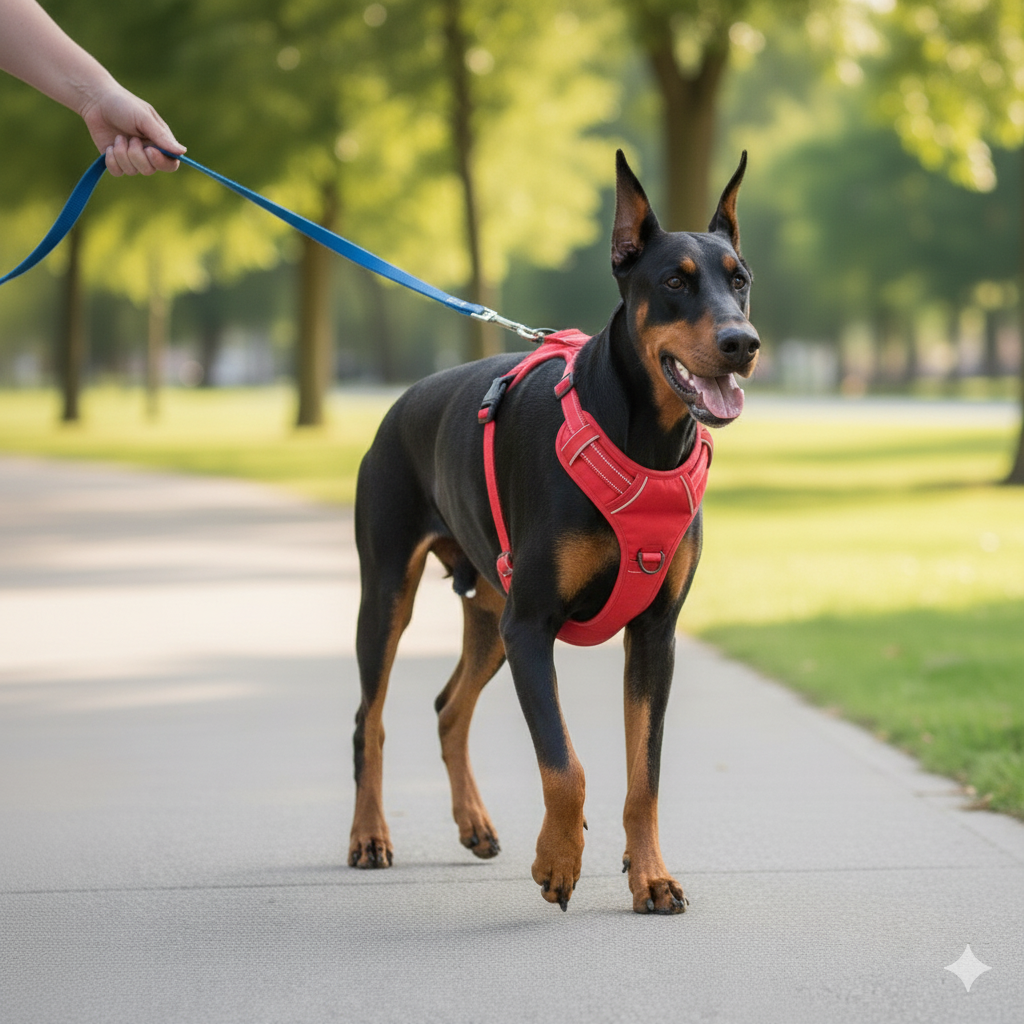
The front-clip harness is a brilliant piece of engineering designed specifically as a training tool to solve the problem of pulling. Instead of engaging in a strength contest, it uses the dog's own momentum against them. Think about trying to steer a shopping cart. You can't steer it very well by pulling from the back. You have to push or pull from the front to turn it. A front-clip harness works on the same principle. When the dog lunges forward, the leash tightens at their chest and it creates a gentle steering motion, turning their shoulders and redirecting them to the side or back towards you. This makes pulling ineffective. Their forward lunge doesn't get them where they want to go. This isn't painful or harmful; it's simply a change in physics. Many of the best modern harnesses I design are dual-clip, featuring a ring on both the front and the back, giving owners the flexibility to choose based on the situation.
Are There Dogs Who Should Absolutely Avoid Collars for Walks?
You see very small dogs or dogs with flat faces and wonder if a collar is actually dangerous for them. The thought of injuring a dog with special needs is a serious concern.
Yes, absolutely. Small or toy breeds, brachycephalic (flat-faced) breeds, and dogs with a history of neck or back problems should never be walked on a collar. For them, a harness isn't just better; it's essential for their safety.
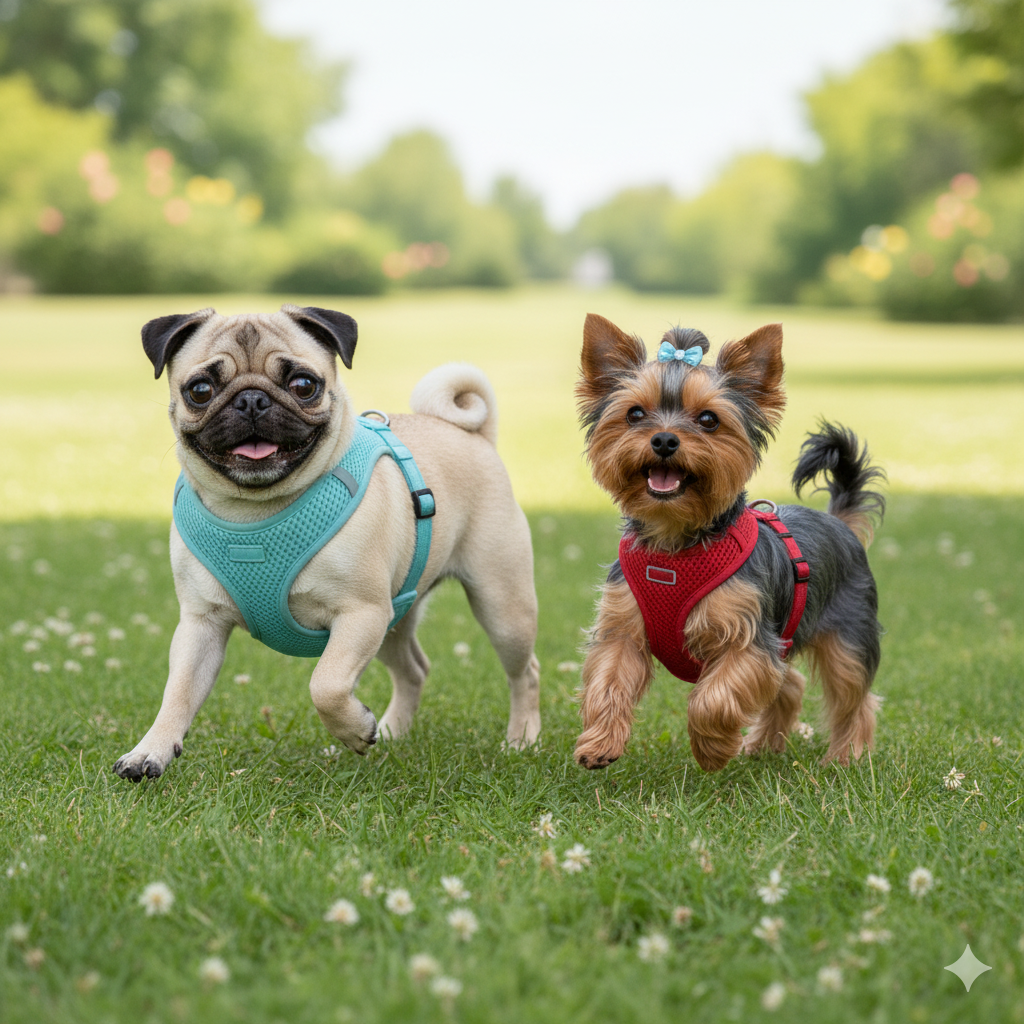
As a designer, my first rule is "do no harm." For some dogs, using a collar for walking is an unacceptable risk. It's a fundamental mismatch between the equipment and the dog's anatomy.
High-Risk Groups for Collar Use
- Small & Toy Breeds: Dogs like Chihuahuas, Pomeranians, and Yorkshire Terriers have incredibly fragile tracheas. A single hard pull on a collar can cause a partial or complete tracheal collapse, a painful and often permanent condition.
- Brachycephalic Breeds: Pugs, French Bulldogs, Boxers, and other flat-faced breeds have compromised respiratory systems from the start. Any pressure on their throat can restrict their already-limited airflow, which is extremely dangerous.
- Dogs with Medical Conditions: Any dog with a history of spinal problems, an eye condition like glaucoma (neck pressure can increase eye pressure), or a previous neck injury should only be walked on a harness to avoid making their condition worse.
For these dogs, the choice is clear. A comfortable, well-fitted harness is the only safe way to enjoy a walk.
Conclusion
Choose the right tool for the job. A collar is for your dog's ID tags. A harness is for safe and comfortable walks, protecting their neck and giving you better control.
Cindy Long is the Sales Manager of Raysunpets and a pet lover with over 12 years of experience in exporting pet products. She specializes in providing customized dog chest carriers, leashes and pet accessory solutions for the European and American markets, always focusing on the real needs of customers and pets, and is committed to creating high-quality, practical and comfortable products that allow fur kids to live happier lives.

